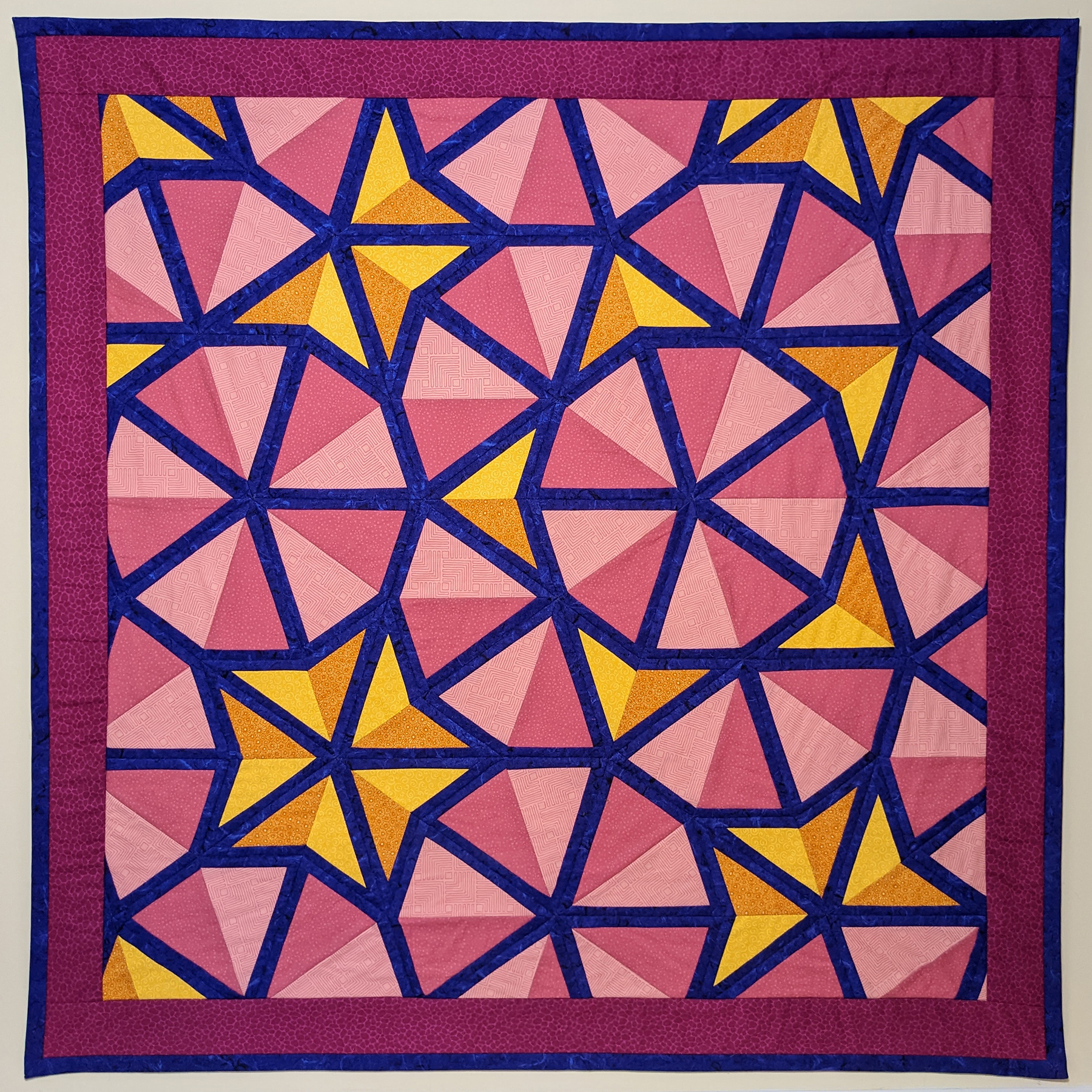Matt Zucker
I have been fascinated with geometric tessellations as long as I can
remember. Since 2014, I have been publishing interactive computer
graphics works on shadertoy.com, with multiple Truchet tilings and
several examples of Wythoff's kaleidoscopic construction on the sphere
and hyperbolic plane. Like many people, I took up sewing during the
pandemic for home mask-making, and in January 2021 embarked on a
journey to combine my love of tiling with the art of quilting.
Although in hindsight, the projects I took on were a little ambitious,
I am encouraged by the results, and by the ability to hold in my hands
the type of compositions that were previously just collections of
pixels on a screen.
The central pentagons in this pillowcase form the classical Cairo
pentagonal tiling, which dates back to at least 18th-century
India. It is the dual of the snub-square tessellation of the
plane. Each central pentagon has two right angles and three
120$^{\circ}$ angles. Moving out to the left and right, the
composition smoothly transitions to feature pentagons with three
right angles and two 135$^{\circ}$ angles. The central panel is
assembled using English paper piecing. The pattern was created
using a custom computer program which output 1:1 templates for
cutting and basting to the fabric. Fabrics were chosen to match
matplotlib's "viridis" colormap. The quilting stitches reveal a
regular square lattice that underlies the tiling.
The sewing pattern for this quilt was created using a custom
computer program written to establish the composition, and then
recursively decompose it into modules to be machine-sewn along
straight seams. The base modules, seen in the design as the four
distinct half-dart and half-kite shapes with half-outlines, were
assembled using foundation paper piecing. Fabrics were chosen to
match matplotlib's "plasma" colormap, and were hand-dyed and
bleached to better complement each other. Other Penrose quilts
exist; what makes this one unique are the modular assembly
technique and the outlines between shapes. The piece is quilted
along the centers of the outlines, so that the familiar Penrose
kite and dart shapes are visible on the back.

